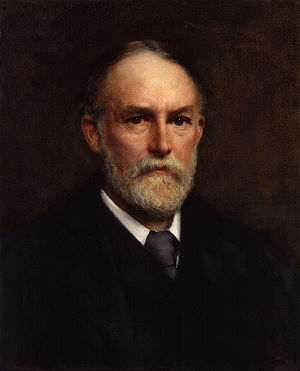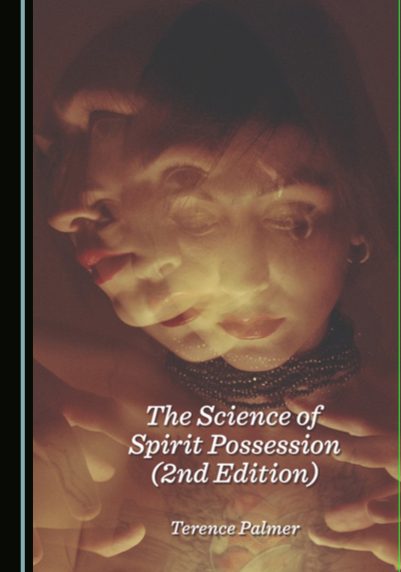In my view, the most significant discovery from my research into the work of Frederic Myers (pictured above) is the concept of telepathic hypnosis. This is, I believe, the core concept in the influence of discarnate spirit entities on consciousness, and must stand out as probably the most important of all discoveries in applied experimental psychology. My own personal discovery of this phenomenon was a complete surprise and a revelation that demanded explanation. Subsequently, through research reading of the documented evidence on telepathic hypnosis, I fail to understand why such an important facet of human communication has been discarded and avoided by modern scientific enquiry. Here follows an excerpt from my book The Science of Spirit Possession 2nd ed (2014).
The concept of hypnosis at a distance, or telepathic-hypnosis, was first documented by the Marquis de Puységur, a disciple of Franz Mesmer (1785). He agreed with Mesmer that the influence of what they then perceived as “magnetic fluid” was not impeded by physical obstacles. This meant that the magnetiser could magnetise through walls and from one dwelling to another. Puységur was not content to accept the theories of others and commented:
This is the kind of thing that is impossible to prove by rational arguments and for which experience alone can provide certainty. For that reason, it is to men who are aware of this small part of their power that I now direct some recommendations about the best way to use it (Puységur 1785, p.112-113).
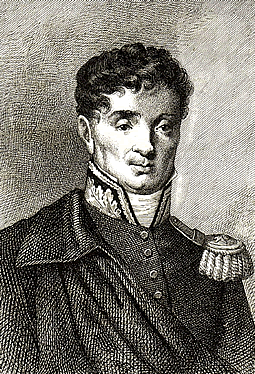
Puységur was aware of the possible detrimental effects of inducing somnambulism at a distance, and he records cases where some patients, whilst on their way to visit him for a consultation, actually arrived already in a somnambulistic state. Puységur was also aware of other possible dangers:
Apart from this inconvenience, there is another one very much to be feared – the risk that some extraneous factor will interfere with the effect produced at a distance. If, for example, the effect one produces is somnambulism, one must know very well how susceptible this peaceful state is to being disturbed by the least extraneous circumstance, which can then cause truly miserable confusion (Puységur, 1785, p. 113).
In other words, the somnambulist who was not being guarded or directed by the magnetiser would be vulnerable to all kinds of circumstance that could cause problems. Two important factors emerge from Puységur’s observations regarding telepathic hypnosis: the importance of experience in contrast to rational argument in determining its credibility; and the vulnerability of the unsupervised subject. The importance of experience is a recurring theme throughout this book and the foundation of a revised epistemology, and so too is the problem of vulnerability to the unprotected and uninformed in all matters concerning possession and other forms of spirit influence to the vulnerable mind.
According to Crabtree’s research, the French magnetiser, Baron Jules de Sennevoy Dupotet attempted to produce a state of somnambulism from a distance under controlled conditions in 1820 (Crabtree, 1993, p. 45). Other researchers who investigated this phenomenon in the 1880s include French psychiatrists Pierre Janet (1886b), Charles Richet (1886) and J. Hericourt (1886). Distant mesmeric effects have also been reported by English surgeons James Esdaile (1846) in India, and John Elliotson (1843) and Chauncey Hare Townsend (1844) in England.
Frederic Myers, like Puységur one hundred years before him, was not content to leave such phenomena to rationalist argument, and he sought to gather evidence to demonstrate that suggestion was not an adequate explanation for all hypnotic phenomena:
The evidence for telepathy – for psychical influence from a distance – has grown to goodly proportions, for a new form of experiment has been found possible from which the influence of suggestion can be entirely excluded. It has now, as I shall presently try to show, been actually proved that the hypnotic trance can be induced from a distance so great, and with precautions so complete, that telepathy or some similar supernormal influence is the only efficient cause which can be conceived (Myers, 1903b, p. 140).
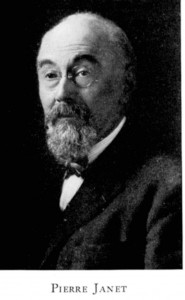
Pierre Janet arranged for a series of experiments with his well-known subject, “Madame B” (Leonie) and the first experiments were carried out with her at Le Havre with the assistance of Dr Gibert, Leonie’s physician. These experiments are described in the Bulletins de la Societe de Psychologie Physiologique, (1886) Tome I., p. 24, and in the Revue Philosophique, August (1886).
Myers expressed his good fortune to be invited to witness the experiments of Janet with Leonie, and was impressed with the precautions taken by Janet to avoid any influences that could be attributable to the power of suggestion:
These experiments are not easy to manage, since it is essential at once to prevent the subject from suspecting that the experiment is being tried, and also to provide for his safety in the event of its success. In Dr Gibert’s experiment, for instance, it was a responsible matter to bring this elderly woman through the streets of Le Havre. It was needful to provide her with an unnoticed escort; and, in fact, several persons had to devote themselves for some hours to a single experiment (Myers, 1903b, p. 140).
Myers uses extracts from Janet’s report (1886a) to emphasise the simple fact that the subject was being hypnotized from a distance by Dr Gibert, not only with no influence from the power of direct suggestion, but against her will:
October 3, 1885. Gibert tries to put her to sleep from a distance of half a mile; Janet finds her awake; puts her to sleep; she says, “I know very well that Dr Gibert tried to put me to sleep, but when I felt him I looked for some water, and put my hands in cold water. I don’t want people to put me to sleep in that way; it puts me out, and makes me look silly.” She had in fact held her hands in water at the time when Gibert willed her to sleep. October 9. Gibert succeeds in a similar attempt; she says in trance, “Why does Dr Gibert put me to sleep from his house? I had not time to put my hands in my basin” (Myers, 1903, p. 973).
Myers was never content to depend on just one case to support his hypotheses, and he collected accounts from other reliable sources for evidence of telepathic hypnosis. He further cites an account, contributed by a Dr E. Gley that was published in Tribune Medicale in May 1875, of a 14 year-old girl that initiated a series of over one hundred experiments conducted under a variety of conditions (Myers, 1903b, p. 143).
It could be argued that had modern theorists been aware of the outcomes of these experiments, and Myers’ theories to explain them, then the course of experimental hypnosis would have taken a very different path. Furthermore, I very much doubt that the seemingly magical phenomena exhibited by professional stage hypnotists would prove so fascinating to a gullible and uninformed public. But it would appear that the evolution of the study of psychic phenomena took its path because of the difficulties of finding a theory to explain telepathy per se.
Although temporarily abandoned following Myers’ death in 1901, experiments with telepathic hypnosis did not end with Myers, Janet and Gley. In the 1920s, Inspired by the work of Myers and Janet, Leonid Leonidovich Vasiliev, Professor of Physiology at the Institute of Brain Research in the University of Leningrad, took up the challenge to find a theory to explain telepathy in the face of very difficult political circumstances (Vasiliev, 1963).
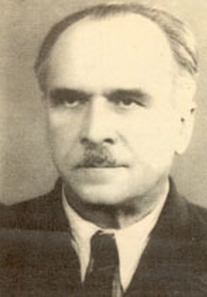
There were many researchers in Europe, the USA and Russia who took in interest in telepathy and in telepathic-hypnosis, and Vasiliev gives an excellent account of their input and the difficulties they had. Essentially, they all tried to find a theory to explain the transmission of thought from one person to another that fitted in with the prevailing electromagnetic and radio-wave theories at that time (from the 1920s to the 50s).
As a neurologist, Vasiliev’s interest in telepathy and hypnosis at a distance was to test the theory that telepathic communication was effected by an electromagnetic field. One of his methods of testing the efficacy of the hypnotic suggestions delivered to the percipient is based on the findings of V.V. Pravditch-Neminsky in 1925 that brain activity can be measured by the use of an Electro Encephalogram (or EEG). Right up to the present day it is acknowledged that brain waves operate at different frequencies according to the level of mental activity. In chapter one of Hartland’s Medical and Dental Hypnosis by David Waxman (1989) it states:
… with the advancement of electroencephalographic and other investigatory procedures and with the development and extension of experimental laboratories worldwide, neurophysiological and psychological research has increased and the true place for the clinical application of hypnosis has at last been found (Waxman, 1989, p.3).
The above statement by Waxman is an example of an incorrect assumption that is based on the use of technological measuring equipment. The fact that brain waves can be measured does not imply that a unique state of consciousness has been discovered. All it means is that the activity of the brain can be measured, but it does not mean that consciousness can be held in, or created by an electro-chemical impulse.
EEG research does show that the brain operates at different frequencies depending on mental activity, and this summary shows the frequency levels taken from Vasiliev’s text:
- The alpha rhythm. Frequency F = 7.5 to 13 cycles per second. The amplitude of alpha is affected by age, hunger and emotional excitation. The frequency of alpha is constant over a long period of life, from the age of 20 to 70. A suppression of alpha can be obtained by increased input from sense organs. Suppression of alpha is most characteristically demonstrated by when opening the eyes causing an increase of light falling on the retina.
- Beta rhythm, F = 15 to 25 cycles per second. Beta is most easily elicited when alpha is suppressed with increased sensory input.
- Theta rhythm, F = 4 to 7 cycles per second. Theta is characteristically associated with the emotions. It appears in the EEGof children in temper tantrums and adults when angry and aggressive.
- Delta rhythm, F = 05. To 3 cycles per second. Incidence of delta in the waking cortex signifies pathology, but is normal in sleep.
- Rapid spikes, F = 500 to 1,000 cycles per second. Primarily located in the anterior temporal lobe and considered by some authors to be due to the stimulation of local nerve cells.
Waxman states that entering the alpha rhythm is the start of the hypnotic process which becomes progressively deeper with greater physical and emotional relaxation. He reports that there is a general consensus that the EEG brain activity recorded during hypnosis is the same as that recorded during wakeful relaxation and differs markedly from brain activity during normal sleep. He does suggest however, the possibility that the hypnotic trance state may show eventually that there is a ‘neurophysiological state that is particular to hypnosis’ (Waxman, 1989, p.33).
Waxman clearly lived in hope that EEG technology would eventually live up to expectations and show that the hypnotic-trance is a unique neurophysiological state.
Vasiliev and his colleagues at Leningrad University tested the theory that telepathy worked by the transmission of thoughts from one person to another by electromagnetic wave resonance. Their experiments confirmed that the effects of the suggestions delivered to a percipient by telepathy could be measured by EEG by recording differences in brain activity.
It was believed at the time that the electromagnetic waves measured by EEG were carriers of thought waves from person to person, and this provided the theory of the transmission of thoughts by telepathy. According to Vasiliev, the idea was advanced by academic P.P. Lazarev in 1920 who suggested:
We must thus consider the possibility of catching in space a thought in the shape of an electromagnetic wave; this would seem to be one of the most interesting problems in the whole of biological physics. One must of course realise the immense difficulties that stand in the way of detecting such waves. Many years of strenuous work will be required before isolating and demonstrating these phenomena, but they are inescapably forecast by the ionic theory of stimulation. The transmission of thought processes through space provides a firm basis for an explanation of the phenomena of hypnosis, and this concept is of the greatest interest both from a theoretical and a practical point of view (Vasiliev, 1963 p.8).
And so it was that scientists and academics had such faith in the new electronics of the emerging technological age that they firmly believed that the development of sensitive instruments would one day be able to capture a thought by electronic means as it was transmitted from person to person, and a great deal of effort was expended in trying to develop the technology that would one day capture a thought in transmission.
Other, more mundane methods were used to identify the effects of the telepathic suggestions; including direct observation and the use of other physical and behavioural measuring devices. In modern clinical settings, and therapeutic settings in particular, it is not necessary to use EEG to show when a person enters a trance. Clinicians can use a variety of hypnotic phenomena to confirm when a person has entered an altered state. Vasiliev was able to use such observational devices to confirm that a subject had indeed entered a trance and was able to carry out suggestions delivered by thought alone from the hypnotist. However, when it came to “catching a thought by electronic means” after extensive screening tests he (and others) began to arrive at the conclusion:
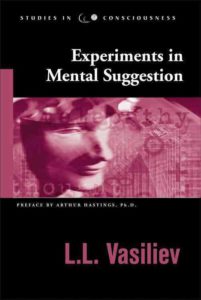 We thus once again obtained data supporting the results of previous experiments with screening by iron. Screening by iron or lead in the manner in which screening was effected by us does not prevent the diffusion of the supposed waves and radiations that transmit mental suggestion (Vasiliev, 1963, p.95).
We thus once again obtained data supporting the results of previous experiments with screening by iron. Screening by iron or lead in the manner in which screening was effected by us does not prevent the diffusion of the supposed waves and radiations that transmit mental suggestion (Vasiliev, 1963, p.95).
Vasiliev acknowledges that the Society for Psychical Research based in London recorded many incidences of spontaneous telepathy over very long distances, from London to Australia for example. He recognises the work of Richet, Warcolliet and Osty, and at the Third Congress of Psychical Research in 1927 Erscollier reported experiments conducted between New York and Paris in both directions with success (ibid, p.97).
Vasiliev cites many other successful experiments carried out by the Athens Society for Psychical Research in 1925. The experiments were conducted between Athens and Paris (2101 km) Warsaw and Athens (1597 km) and Vienna and Athens (1284 km). Encouraged by the success of these and other experiments too numerous to mention here, Vasiliev conducted experiments between Leningrad and Sebastopol, which is a distance of about 1,700 km as the crow flies (ibid, p.99).
Vasiliev’s experiments produced results that were rigorously subjected to tests of statistical significance and showed that telepathically induced hypnosis over long distances was a scientific reality. He knew that hypnosis could be induced by the wilful intention of a hypnotist over long distances, and his observations of the effects of suggestions proved it. These results further reinforced the experiments conducted by others in Athens, New York and elsewhere, and there was general agreement that although the results were conclusive, they were difficult for mainstream science to acknowledge because they could not be accommodated within the prevailing scientific paradigm. The theory that thoughts are carried by electromagnetic waves was never proven.
Vasiliev notes that; “Natural obstacles such as the curvature of the earth’s surface, hills, etc., do not affect the phenomenon” (ibid, p.101). He further comments on what he believed to be the unusual nature of the factor that transmits the “telepatheme” (his name for the theoretical mental energy) from the sender’s brain to the percipient’s. “Like the usual radio waves it operates at long distances, but, as opposed to radio waves, it is not impeded by metal screening” (ibid, p.102).
The successes of Vasiliev’s and others’ experiments, and their collective failure to arrive at a theory to explain them led to increases year-on-year of more and more researchers becoming convinced of the real existence of what Vasiliev came to call “mental suggestion” and to study the various aspects of these “complex” phenomena (ibid, p.114).
In 1947 Thouless and Weisner introduced the term “psi” to identify the mysterious link, or unidentified energy form that linked people in telepathy and other psychic phenomena and debates took place during the 1950s when the term “parapsychologist” emerged to describe those who took the task on, including J.B. Rhine, head of the Parapsychology Laboratory at Duke University.
As an expression of the general attitude of mainstream science at this time, a Dr George Price wrote in an article entitled, Science and the Supernatural, where he writes, “…the published works on this subject are open to criticism of the experimental techniques employed”. By this time the scientific investigation into telepathic hypnosis, due to the great difficulty in arriving at the theory to explain it, had been reduced to “card guessing”, and although Rhine’s results were compelling, Price’s criticism offered only two alternative explanations. One explanation was that the methods were flawed and the other was that they were fraud.
Such debates detracted from the original observations of spontaneous telepathy over great distances and the objective of testing the findings of the early magnetisers such as Mesmer and his contemporaries that an altered state of consciousness (or trance) could be induced from a distance was lost from the scientific agenda. The practice of experimenting to find a theory to explain telepathic-hypnosis disappeared from view until it was the Russians, once again, whose experiments in psychic spying were brought to the attention of the United States Department of Defense. We take up the story again in Chapter Ten where I look at Myers concepts in relation to quantum theory and “remote viewing”.
It is by discovering that telepathic-hypnosis was acknowledged, not only by Myers, but also by a vast and impressive line-up of scientists with credentials similar to Vasiliev, as a scientifically testable reality that the wider implications of Myers’ methods and theories begin to impinge tentatively on our most commonly held beliefs about the nature of mind.
These scientific facts, although the electromagnetic theory and mechanistic framework are still unable to accommodate them, still demand that we seriously attend to our subliminal influences on each other – for good or for ill. When a spiritualist medium “listens” to those spirits that communicate through her it is called “channelling” (Neate, 1997) and could provisionally be regarded as an act of telepathic communication. When the spirit wants to take control of the medium’s faculties in order to effect a more direct communication, and the medium agrees to that and goes into a trance, then that can be described as positive or “invited” possession. In such instances, the medium’s mind “dissociates” and steps aside, so to speak, and permits the spirit entity to take control of her communication infrastructure (brain and voice box). When this is done without the knowledge or consent of the subject then it is “uninvited” possession. When the discarnate spirit wants to induce a trance in the subject without her consent then this is achieved by “telepathic hypnosis”. Thus, it is my contention that the concept of hypnosis at a distance is at the very core of possession phenomenology, and the remainder of this book The Science of Spirit Possession (2nd ed) (2014) will provide further evidence in support of this hypothesis.
For serious researchers here is a link to purchase the book. Be sure to use the discount code ‘spirit20‘ for a 20% discount on both the hardback version with 356 pages and the paper back with 219 pages.

